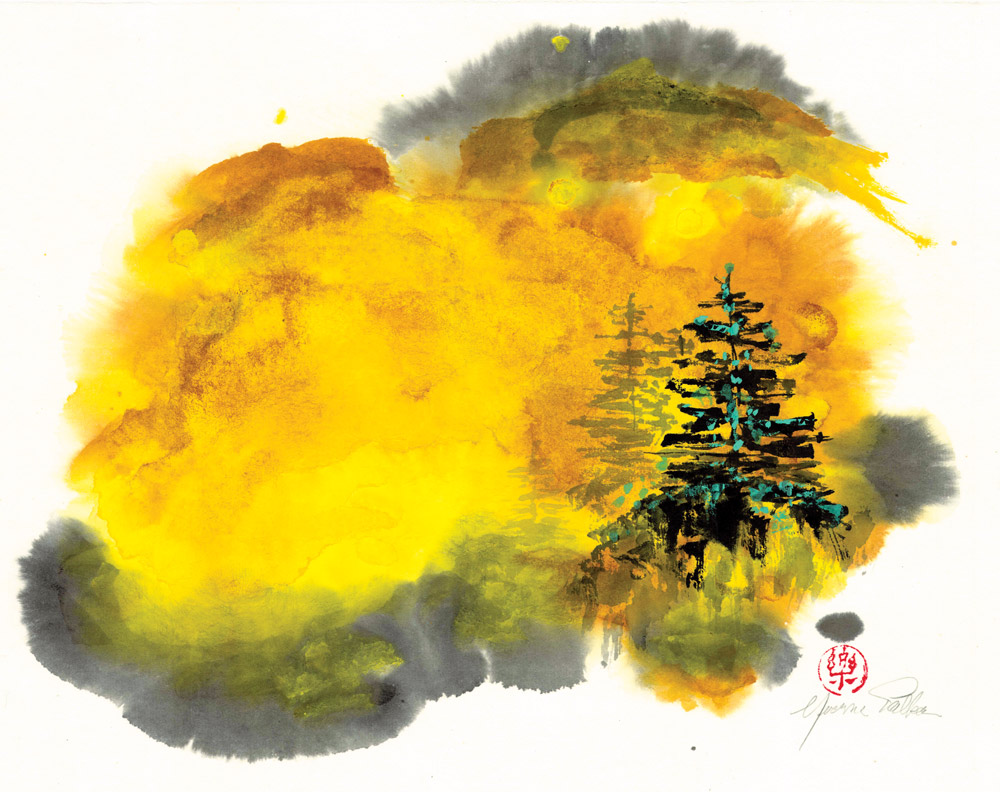dialogue
On Our Radar
an aside on taking sides
Re: Joel Jaffe ’65’s letter (winter 2021), I would vehemently disagree. We cannot all agree that the endowment should be apolitical. Many of us don’t believe there is such a thing — refusing to take a side is taking a side. One of the reasons I have not donated to the College lately (except to the specific fund aimed at bridging the gap for low-income students) is that I do worry about the money being used for causes I oppose.
— WILLA BANDLER ’01, Walpole, Mass.
read between the lines
I arrived at Swarthmore in 1974 with a lively interest in the great Mexican muralists and their depictions of the Mexican Revolution and in murals generally. Sadly, having no reason to visit Hicks Hall when I was a student, I didn’t know until I read the winter 2021 Bulletin that the Egleson murals even existed. I’m very grateful that they’ve been preserved, and with such care. The article does an admirable job of describing the huge and meticulous task of transferring the fragile paintings to their new home in Old Tarble. It is more ambivalent about the paintings themselves, leaving it largely to the fine reproductions that accompany the text to make the case for them as art. One really has to read between the lines to discover any enthusiasm for the murals. I wish someone had come out and said that these murals are real art and form a living part of a wonderful epoch in American painting, when, in large part through the offices of the Works Progress Administration, the art of Diego Rivera and his peers inspired vibrant, monumental, politically conscious murals in public buildings across the U.S.
— ANTHONY DANGERFIELD ’78, Medford, Mass.
brushstroke

I was very pleased to receive the digital copy of the winter 2021 Bulletin, and startled to see the cover. Here is why (right). Is this not very, very reminiscent of the image you published? It is a painting by my wife, Yvonne Schaelchlin Palka ’60, one of her last. She died tragically following an accident in which we were both struck down while crossing a street in Minneapolis by a young driver who was momentarily distracted by the headlights of a car coming from the opposite side. We used this painting in all of the celebrations of Yvonne’s life. I simply wanted to share it with you.
— JOHNNY PALKA ’60, Maple Grove, Minn.
The Disease of Gun Violence
There’s a virus afflicting our country that has claimed the lives of more Americans in the last 50 years than all of our wars combined. It is equivalent to having a coronavirus-level pandemic nearly every decade. This virus has nothing to do with our immune systems: It’s our toxic gun culture. Over 100 Americans are killed by a gun every day, with an additional 230 shot and wounded. Only 1 in 3 Americans own a firearm, but that’s enough to own 40% of the total civilian-owned firearms in the world, meaning there are more guns than there are people in the United States. All this despite the fact that America doesn’t have a crime problem noticeably different from other developed countries. If our disillusioned attitude toward guns is the virus, then gun violence is the resulting disease. Americans are 25 times more likely to die from a firearm than people in other developed nations. We are 10 times more likely to die by suicide with a firearm (accounting for 60% of all gun deaths). In the last five years, we’ve averaged nearly 40,000 gun deaths annually. Addressing gun violence is recognizing that guns are a problem to begin with: They are the means of violence, not the prevention. They are the disease, not the cure. This is not to say guns have no place in society — after all, achieving viral immunity requires at least some exposure. But a public health approach rooted in data and empathy, supported by engaged stakeholders, and leveraging proven measures is a good place to start. It’s time to get healthy. It’s time to beat this virus.
— OLIVER HICKS ’22, San Luis Obispo, Calif.

We were awestruck by the artistic parallels of the cover photo of water and food coloring by Laurence Kesterson and this painting by Yvonne Schaelchlin Palka ’60, who died in November 2019. Thank you, Mr. Palka, for sharing your wife’s beautiful artwork.